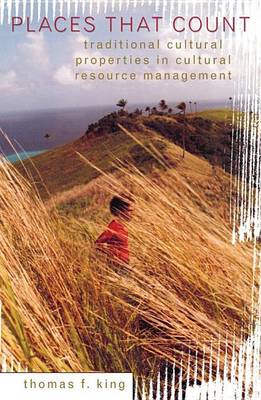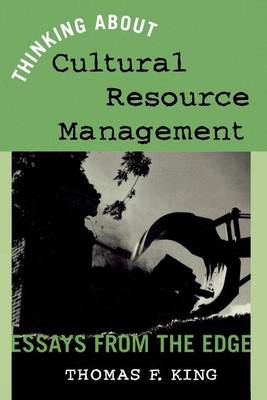Heritage Resource Management
1 primary work • 4 total works
Book 5
Places That Count offers professionals within the field of cultural resource management (CRM) valuable practical advice on dealing with traditional cultural properties (TCPs). Responsible for coining the term to describe places of community-based cultural importance, Thomas King now revisits this subject to instruct readers in TCP site identification, documentation, and management. With more than 30 years of experience at working with communities on such sites, he identifies common issues of contention and methods of resolving them through consultation and other means. Through the extensive use of examples, from urban ghettos to Polynesian ponds to Mount Shasta, TCPs are shown not to be limited simply to American Indian burial and religious sites, but include a wide array of valued locations and landscapes-the United States and worldwide. This is a must-read for anyone involved in historical preservation, cultural resource management, or community development.
Tom King knows cultural resource management. As one of its long-standing practitioners, a key person in developing the regulations, and a consultant, trainer, and author of several important books on the topic, King's ideas on CRM have had a large impact on contemporary practice. In this witty, sardonic book, he outlines ways of improving how cultural resources are treated in America. King tackles everything from disciplinary blinders, NAGPRA, and the National Register to flaws in the Section 106 process, avaricious consultants, and the importance of meaningful consultation with native peoples. This brief work is an important source of new ideas for anyone working in this field and a good starting point for discussion in courses and training programs.
Renowned cultural resource management consultant Thomas F. King demystifies this web of regulations surrounding this field, providing frank, practical advice on how to ensure regulatory compliance in dealing with archaeological sites, historic buildings, urban districts, sacred sites and objects, shipwrecks, and archives. In this new edition, King reports on changes in cultural resource laws, regulations, and executive orders in the past five years and adds material on Section 106 review, NEPA, and the Preserve America executive order.
Section 106. A critical section of an obscure law, the National Preservation Act. It has saved thousands of historic sites, archeological sites, buildings, and neighborhoods across the country from destruction by Federal projects. And it has let even more be destroyed, or damaged, or somehow changed. It is the major legal basis for a multi-million dollar 'cultural resource management' industry that provides employment to thousands of archeologists, historians, and architectural historians. It is interpreted in a wide variety of ways by judges, lawyers, Federal agency officials, State and Tribal Historic Preservation Officers, contractors, and academics. But what does it say, and how does the regulatory process it created actually work? In this book, Tom King de-mythologizes Section 106, explaining its origins, its rationale, and the procedures that must be followed in carrying out its terms. Available just months after the latest revision of section 106, this book builds on King's best-selling work, Cultural Resource Laws and Practice: an Introductory Guide (AltaMira Press 1998). It is indispensable for federal, state, tribal, legal, academic, and citizen practitioners in the United States. King's engaging and witty prose turns a tangle of complicated regulation into a readable and engaging guide. ** CLICK 'Sample Readings' below to view the most current addendum to this book. Sponsored by the Heritage Resources Management Program, University of Nevada, Reno



